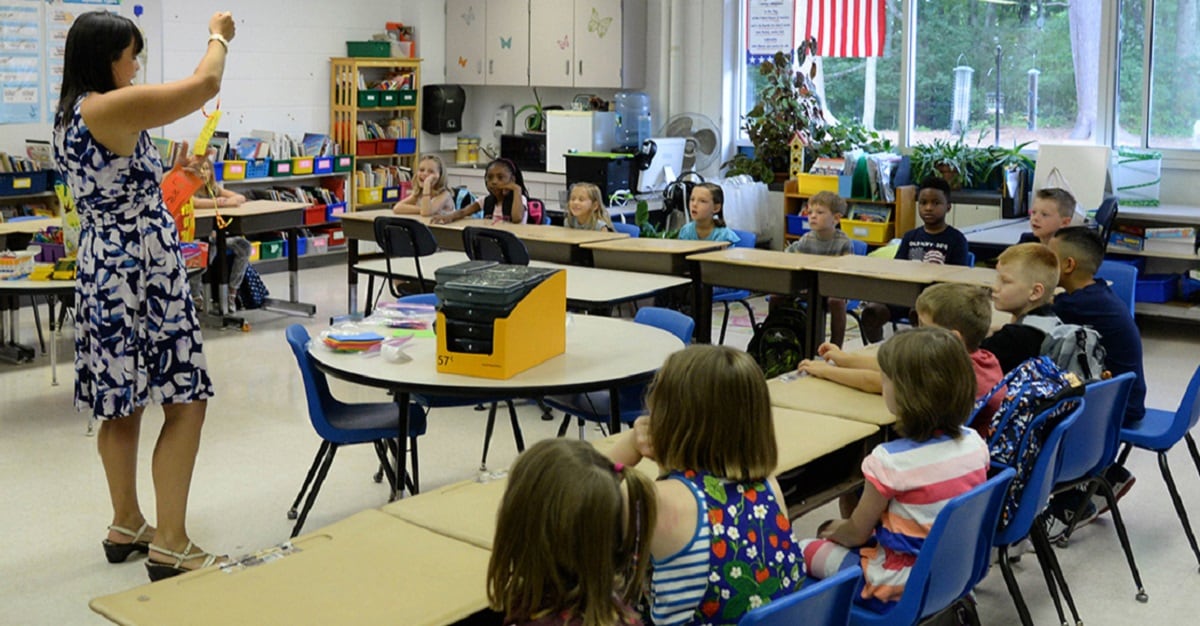The Trump administration is considering a school voucher-like program for military families, a potentially far-reaching change that aims to address persistent concerns about the quality of schools available to military children.
More evidence of those concerns came Feb. 23 in the form of a joint letter from the service secretaries to the National Governors Association, saying they will encourage military leaders to consider quality of schools near bases when making decisions about future basing decisions or mission alternatives.
For the active-duty service members who have school-aged children, “their decisions about where they go, or where they don’t go, or whether they continue to serve, hinge very heavily on the opportunities they have for their children’s education,” Education Secretary Betsy DeVos said Feb. 22 during an appearance at the Conservative Political Action Conference. “I think we have an opportunity to change that dynamic for them.”
DeVos described an idea being floated that would give military families access to education savings accounts. While not technically vouchers, families could use federally funded ESAs as they choose to provide K-12 education for their children.
It was unclear where the money would come from, and Education Department officials would not provide specifics. But DeVos told the CPAC audience that the ESAs would “take the funding that would go for their child’s education at whatever the assigned school is, and use it to customize their education,” implying the money would come from Federal Impact Aid funds that school districts receive to offset the local tax base that’s lost to these districts because of federal property.
The Heritage Foundation, a conservative think tank, has proposed moving the $1.3 billion in yearly impact aid funds into ESAs for some military families and others under the program. It’s not clear whether DeVos supports that idea; an Associated Press story initially reported that DeVos backed the Heritage proposal, then was corrected to say that she didn’t, though she’d expressed support for the idea in general.
RELATED

Of the $1.2 billion in impact aid money that is budgeted for fiscal 2018 by the Education Department, about 53 percent, or $630 million, is for impact aid payments made for students who live on Indian lands, according to fiscal 2019 budget documents. The amount provided to schools to compensate for lost tax revenue related to military students is about $515 million.
The AP story cited a figure of 126,000 military-connected children who would be eligible for the funds. But according to Defense Department statistics, there are more than 550,000 children ages 6 to 18 in active-duty families. Based on those numbers, diverting military-related impact aid funds would average to less than $1,000 per year per military child for education.
“How do you decide which of those half million kids school-aged kids in active-duty families get the [education savings account]?” asked Eileen Huck, deputy director of government relations for the National Military Family Association. “How do you divide it up in a meaningful way? Who’s going to run that program? We’re just left with a lot of questions.”
NMFA has supported school vouchers for military children in states with voucher programs, Huck said, “but we strongly support impact aid and we would oppose anything that would divert impact aid funding to a voucher. ... It’s a misconception that it’s a per capita [program], that this is money per military kid. It’s really to offset the loss of revenue that a school district has when it has federal land within its boundaries.
“Trying to recast it as a voucher program really goes against the entire purpose of the program, and would be financially devastating to a large number of school districts.”
More details about the idea and any proposals were not available from the Education Department.
“The Secretary wants our nation’s military connected families to have the freedom they deserve to send their children to a school that meets their unique needs and learning style,” department press secretary Liz Hill said in a statement. “There are several pieces of legislation that could make that happen, and she looks forward to working with Congress on this issue.”

In her CPAC remarks, DeVos said military children could use the ESAs to attend classes at public, private or online schools, or some combination. Funds could roll over for use in future years.
HELPING SPOUSES, KIDS ADJUST
In addition to factoring school quality into basing decisions, service secretaries in their Feb. 23 letter to the NGA said they’ll also consider whether reciprocity of professional licenses is available for military spouses. That issue has long been a barrier for spouses seeking employment.
The secretaries ― Army Secretary Mark Esper, Navy Secretary Richard Spencer and Air Force Secretary Heather Wilson ― wrote that they are often asked what communities can do to support the military.
“While focus on the mission is always our priority, the factors military families cite most frequently as drawbacks to military service include military dependents’ difficulty assimilating into local school systems following a duty station transfer, the quality of schools available for their children, and the ability of spouses to obtain jobs and sustain careers,” the letter states.
“If the service secretaries have sent a letter like this in the past, I’m not aware of it,” NMFA’s Huck said. “I was really gratified that they chose to highlight issues of spouse employment and kids’ experiences in schools, and that they recognize those are important issues to military families.”
While DoD hasn’t proposed another round of base closure and realignment in the fiscal 2019 budget, leaders still have the ability to make other moves, such as deciding where newly created units will be based.
Some were taken by surprise by the letter, said one Army source familiar with the issue.
“Would the Army not send soldiers and families to, let’s say, Fort Bragg, Fort Hood, Fort Drum, if school quality is not up to par or if licensing of spouses isn’t possible?” the source said. “We are still sending families to Fort Irwin, where it takes at least an hour bus ride to get to school, but we also send kids on buses in Europe that have the same lengthy rides.”
In one instance, an extensive analysis was conducted to determine which Army installation out of four choices could best support soldiers and families of new security brigades, including the quality of schools, licensing reciprocity and other issues, the source said. But in the end, that recommendation “was ignored.”
“Raising awareness is very important and if it makes one school district or one state look at its policies and reassess, or if it makes a state look at its licensing and certification policies, that’s a good thing,” Huck said.
Karen has covered military families, quality of life and consumer issues for Military Times for more than 30 years, and is co-author of a chapter on media coverage of military families in the book "A Battle Plan for Supporting Military Families." She previously worked for newspapers in Guam, Norfolk, Jacksonville, Fla., and Athens, Ga.




